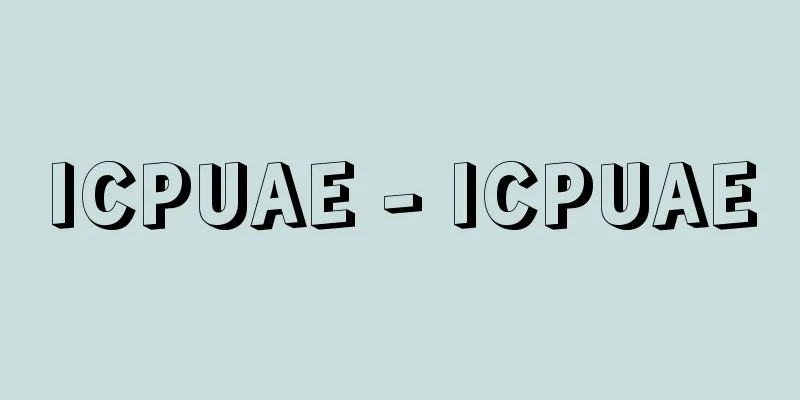Seedling bed - Nawashiro

|
This refers to a seedbed where rice, rush grass, etc. are raised using flood irrigation. Currently, rice transplanting is mechanized, and the seedlings are raised in seedling boxes. Seedling boxes are lined up in seedling facilities such as vinyl greenhouses, but the beds are often in a field condition, and flooded seedbeds are also used in warm areas. Nursery bed management involves daily temperature control, irrigation, and fertilization, and these techniques determine the seedlings' qualities, which in turn have a major impact on their growth and yield in the fields after transplanting. The main focus of management is to pay attention to keeping the seedlings warm in cold regions so that they can grow smoothly, and to prevent them from becoming spindly in warm regions and during high temperatures, all of which are aimed at producing healthy seedlings, that is, seedlings with good root development and thick, sturdy stems and leaves. Healthy seedlings take root immediately after transplanting, have strong rooting power, and show excellent growth and tillering thereafter. Seedling beds began around the Nara and Heian periods, when rice cultivation changed from direct seeding to transplanting, and have continued to the present day, but various forms have changed over the years. (1) Flooded seedling bed This is the oldest method, and is constantly flooded. This reduces the occurrence of weeds and damage from birds. It requires less material and labor, but since it relies only on water for insulation, the seedlings do not take root well and are slow to take root. (2) Field seedling bed Seedlings are raised in a field. In particular, those created by drying out part of a paddy field are called on-land seedling beds. They were used when there was a shortage of water for seedling beds or in warm areas where double cropping is done. They produce strong seedlings that take root well and have excellent rooting, but they are prone to weeds and damage from birds. (3) Hybrid nursery bed This is a combination of water nursery bed and field nursery bed, where the nursery bed is flooded in the early stages, flooded only in the railroad crossing grooves in the middle stages, and then turned into a field nursery bed in the later stages. The seedlings are kept warm with water in the early stages, and root growth is strengthened in the later stages, so they grow uniformly and have excellent rooting ability. It was used for high-yield cultivation in warm regions. (4) Insulated hybrid nursery bed This is basically the same as the hybrid nursery bed, but after sowing, the soil is covered with burnt rice husks and then covered with oil paper for hotbeds or vinyl sheeting to keep them warm, which promotes early growth, produces healthy seedlings, and allows them to be transplanted earlier than before. Since around 1955, this method has contributed to the stabilization of rice cultivation in cold regions and the early cultivation in warm regions. (5) Vinyl nursery bed: A vinyl tunnel covering the insulated hybrid nursery bed or field nursery bed to keep it warm. Both of these methods allow for earlier seedling growth and produce healthy seedlings, and by the 1960s this had become the standard in cold regions. (6) Hotbed nursery bed: A vinyl field nursery bed with heating materials or electric heating wires buried under it for heating. This method was used in cold regions such as Hokkaido and Tohoku as a way to grow seedlings earlier and more safely. The current seedling raising method takes the advantages of heat-retaining hybrid seedling beds, vinyl seedling beds and hotbed seedling beds and applies them to box seedling raising. [Hoshikawa Kiyochika] Source: Shogakukan Encyclopedia Nipponica About Encyclopedia Nipponica Information | Legend |
|
水稲、イグサなど湛水灌漑(たんすいかんがい)して育苗する苗床をいう。水稲は現在は移植が機械化され、苗は育苗箱で育てられる。育苗箱はビニルハウスなど育苗施設に並べられるが、その床は畑状態であることが多く、また湛水の苗代も暖地などで用いられている。 苗代における管理は毎日の温度調節、灌水、追肥などであるが、この技術によって苗の素質が決まり、それは移植以降の本田での生育と収量に大きな影響を及ぼす。管理の主眼は、寒冷地では苗の生育を順調に進めるよう保温に注意すること、暖地や高温期には苗を徒長させないようにすることにあり、いずれも健全な苗、すなわち根張りがよく、茎葉の太いがっしりした苗をつくることにある。健苗は移植してただちに発根し、活着力が強く、以降の生育や分げつも優れる。 苗代は、水稲が直播(じかま)き栽培から移植栽培にかわった奈良・平安時代ごろから始まり、現在に至っているが、いろいろの形式が時代とともに変遷してきた。(1)水(みず)苗代 もっとも古くからの方式で、常時湛水する。このため雑草の発生や鳥害は軽減させることができる。資材や労力は少なくてすむが、保温は水に頼るだけなので、苗は根張りが弱く、活着も遅い。(2)畑(はた)苗代 畑状態で育苗するもの。とくに水田の一部を干してつくるものを陸(おか)苗代という。苗代用水の不足や暖地の二毛作地帯などで行われた。根張りが優れ、活着がよいじょうぶな苗ができるが、雑草や鳥害が多い。(3)折衷(せっちゅう)苗代 水苗代と畑苗代とを折衷したもので、前期は湛水状態にし、中期は床の踏切溝(ふみきりみぞ)にのみ湛水し、後期は畑苗代状態にする方式である。初期は水により保温され、後期は根の生育が強化されるので、苗ぞろいがよく、活着が優れる。暖地の多収穫栽培に用いられた。(4)保温折衷苗代 折衷苗代と基本的に同じであるが、播種(はしゅ)後、焼籾殻(もみがら)を覆土し、温床用油紙やビニルシートで被覆して保温する方式で、初期生育が促進され、健苗ができ、しかも従来より早く田植ができる。昭和30年(1955)ごろより寒冷地の稲作の安定と暖地の早期栽培に貢献した。(5)ビニル苗代 保温折衷苗代あるいは畑苗代の上にビニルをトンネル状に被覆して保温するもので、ともにより早期の育苗を可能にし、かつ健苗をつくることができ、昭和40年代には寒冷地ではほとんどこの形式にかわった。(6)温床苗代 ビニル畑苗代の床下に醸熱資材あるいは電熱線を埋設して加温するもの。北海道や東北などの寒冷地で、より早期により安全に育苗する方式として用いられた。 現在の育苗の方式は、保温折衷苗代、ビニル苗代および温床苗代などの利点をとり、箱育苗に応用したものである。 [星川清親] 出典 小学館 日本大百科全書(ニッポニカ)日本大百科全書(ニッポニカ)について 情報 | 凡例 |
Recommend
North (place name) - Kita
...the name of the area centered on the transport...
Cavernous sinus
…The corpus cavernosum is surrounded by a thick c...
Kandou Water Sea - Kandou Water Sea
...It is an alluvial plain formed by the Hii Rive...
Pristigenys niphonia (English name)
A marine fish of the Perciformes family (illustrat...
Shuma Ogata
...Only chapters 5 and 6 were renamed "Tales...
Kimiidera Temple
A temple located in Kimiidera, Wakayama City. It ...
Anne (English spelling)
Born: 6 February 1665, London [Died] August 12, 17...
Gaston Bachelard
French philosopher. Born in Bar-sur-Aube in the C...
Kansho Dance - Kansho Dance
...The original song, "Aizu Bandaisan is a m...
Viceroyalty - virreinato [Spain]
The Kingdom of Aragon was a unique federal state i...
Table ruled - Omotekei
〘 noun 〙 A type of ruled line used in printing. Th...
Begonia
A general term for the genus Begonia (Begonia) in...
Animal sociology
A branch of ecology that studies animal societies....
Lutetia
…About half a century before Caesar's conques...
Sagasta, PM (English spelling) SagastaPM
…Cánovas's political philosophy, as embodied ...









